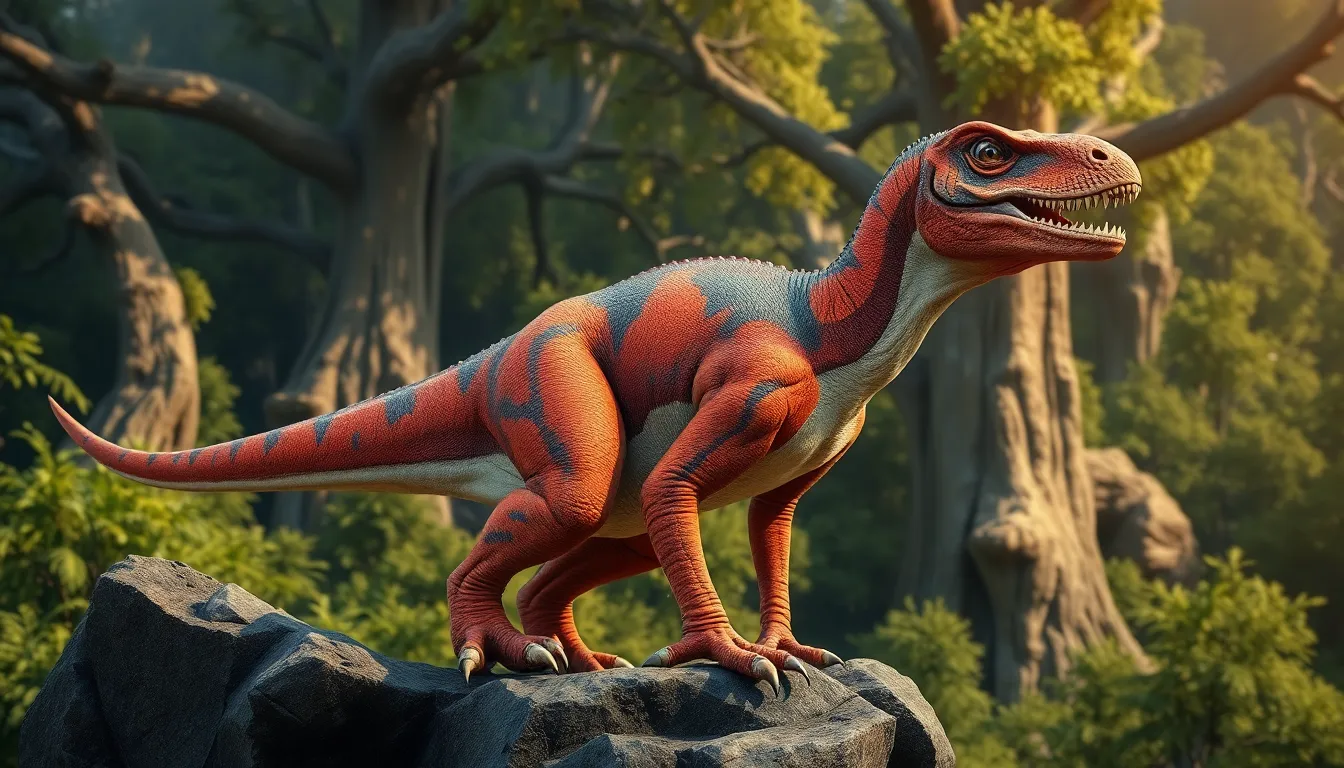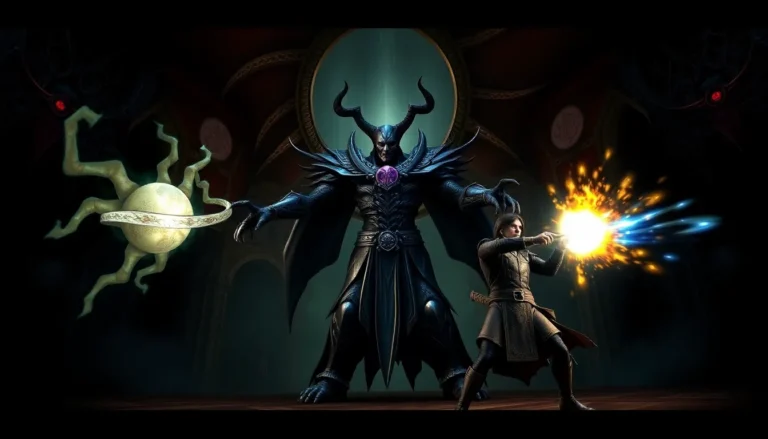In the wild world of Ark: Survival Evolved, players constantly seek ways to outsmart their foes and enhance their dino companions. Enter mutation stacking—a game-changer that can turn a humble raptor into a fearsome beast. Imagine strutting around with a creature so powerful, it could probably bench press a Bronto. That’s the magic of mutation stacking!
Table of Contents
ToggleOverview of Ark Mutation Stacking
Ark mutation stacking serves as a powerful technique for improving dinosaur companions in Ark: Survival Evolved. Players engage in this method to enhance specific traits, allowing for customized and superior creatures. Enhanced creatures possess higher stats, which translates into better performance in various scenarios, including PvP and boss fights.
Mutation stacking primarily relies on selective breeding of creatures. By breeding dinosaurs with desirable mutations, players can pass down these traits to offspring. Each successful breeding can yield multiple mutations, significantly increasing the chance of inheriting enhanced stats over generations.
Different mutations affect various attributes such as health, stamina, speed, and damage. Health mutations increase a dinosaur’s survivability during battles, while speed mutations enable faster movement across the map. Stamina mutations enhance endurance, allowing for longer pursuits during chases. Damage mutations improve overall attack effectiveness, contributing to a creature’s offensive capabilities.
Players commonly utilize specific breeds like raptors, which exhibit a higher tendency for advantageous mutations. Frequent breeding cycles create opportunities for successful stacking of desired traits. An effective strategy involves carefully selecting parents with contrasting desirable traits, improving the chance of inheriting beneficial mutations.
Tracking mutations requires attention to detail. Players can utilize external tools or spreadsheets to monitor mutation counts and ensure they do not surpass the genetic threshold. By doing so, they retain superior statistics across generations without risking the dilution of advantageous traits.
Understanding the dynamics of mutation stacking equips players with valuable insights. With focused breeding strategies and meticulous tracking, enhanced creatures emerge, giving players a significant edge in the challenges presented by Ark: Survival Evolved.
Benefits of Mutation Stacking

Mutation stacking provides several advantages for players in Ark: Survival Evolved, particularly when aiming to develop stronger dinosaur companions. Focusing on selective breeding techniques leads to significant improvements in creature capabilities.
Increased Stat Potential
Increased stat potential becomes evident through mutation stacking. Players can enhance key attributes like health, stamina, and damage, creating more formidable dinosaurs. Each mutation contributes a small but meaningful advantage, cumulatively resulting in impressive stat boosts. For instance, a raptor with stacked health mutations can endure more damage, making it a crucial ally in battles. Stat boosts often provide an edge during PvP scenarios or boss encounters. Mutation counts allow players to track improvements and ensure they focus on desirable traits, maximizing their team’s effectiveness.
Enhanced Creature Abilities
Enhanced creature abilities arise from effectively utilizing mutation stacking. This technique not only improves basic stats but also impacts abilities related to movement and combat. A raptor with mutation stacking can achieve greater speed and improved attack damage, enhancing overall performance. Unique abilities might emerge as players combine specific traits, leading to unexpected advantages in various situations. Creatures can become specialized for roles such as scout, tank, or damage dealer, tailoring them to the players’ preferences and strategies. By leading breeding efforts with focused traits, players can transform their dinosaurs into powerful companions ready for any challenge.
How Mutation Stacking Works
Mutation stacking significantly enhances dinosaur capabilities in Ark: Survival Evolved. Players leverage the breeding process to cultivate exceptional creatures through strategic practices.
The Mechanics Behind Mutations
Mutations occur randomly and can impact various stats, including health, stamina, and damage. Each dinosaur breeds with a chance to inherit these mutations, creating opportunities for stronger offspring. When players mate creatures, they combine their genetic traits, increasing the likelihood of passing down desirable attributes. Tracking mutations accurately proves essential for recognizing which advantages persist across generations. By maximizing the potential of each pairing, players navigate the genetic landscape effectively, ensuring an optimal outcome.
Stacking Techniques and Strategies
Players employ specific techniques to enhance breeding results. Selecting parents with contrasting desired traits boosts the odds of obtaining beneficial mutations. Utilizing external tools to track mutation counts aids in avoiding dilution of advantageous traits. Focusing on high-quality breeds, such as raptors, increases the chances of favorable outcomes in subsequent generations. Patience remains vital throughout this process, as achieving the ideal dinosaur may require multiple breeding cycles. Ultimately, applying these strategies guarantees a formidable companion, ready for any challenge.
Common Misconceptions About Mutation Stacking
Players often misunderstand how mutation stacking operates in Ark: Survival Evolved. One misconception revolves around the belief that mutation stacking guarantees superior stats. Although it increases the likelihood of obtaining enhanced attributes, randomness plays a crucial role in mutating traits.
Another common error is assuming that all mutations are equally beneficial. Some mutations impact undesirable stats, leading to a creature’s decline in performance. Evaluating each mutation becomes essential for ensuring that only advantageous traits enhance a dinosaur’s capabilities.
Many players think that tracking mutations isn’t necessary. They may believe that simply breeding two mutated creatures suffices. However, maintaining accurate counts enables players to understand which mutations persist through generations and allows them to make informed decisions about future pairings.
A frequently encountered myth suggests that any dinosaur can produce remarkable mutations. While certain species, particularly raptors, exhibit improved chances for advantageous mutations, others may not offer the same potential. Players need to prioritize specific breeds that demonstrate a higher likelihood of beneficial traits.
Additionally, some players hold the notion that mutation stacking involves minimal effort. While it appears straightforward, achieving optimal results necessitates patience and dedication. Multiple breeding cycles may be required to yield desired creatures.
Lastly, there’s a belief that mutation stacking is a simple, one-time process. In reality, it involves ongoing management and strategy. Players continuously refine their breeding techniques and adapt their approaches to meet shifting game dynamics, ensuring their dinosaur companions remain competitive in various scenarios.
Best Practices for Effective Stacking
Selecting the right base creatures is crucial when starting mutation stacking. Focus on high-quality raptors to maximize the potential for advantageous mutations. Evaluate traits that align with desired enhancements, such as health, stamina, or damage output. Tracking mutation counts using external tools allows players to monitor progress effectively, ensuring they avoid dilution of beneficial traits.
Breeding pairs should exhibit contrasting desirable traits. By combining these traits, players can increase the likelihood of inheriting advantageous mutations. Maintaining a detailed breeding log often aids in understanding which specifics yield favorable results. Strategies involving selective breeding lead to offspring with superior stats over generations.
Utilizing a systematic approach accelerates the stacking process. Frequent mating sessions produce numerous offspring, offering more chances to discover beneficial mutations. Patience remains essential throughout this journey, as achieving an ideal dinosaur often takes multiple breeding attempts. Dedication to tracking results helps identify which mutations persist in successive generations.
Avoid common misunderstandings regarding mutation stacking. Not every mutation promises improvement, making it vital to assess individual traits critically. Certain species consistently outperform others, so prioritize breeds with higher mutation chances. It’s important to recognize that crafting top-tier creatures is an ongoing endeavor, requiring strategic planning and consistent effort.
Staying adaptable to game dynamics enhances breeding outcomes. Being aware of updates or changes in mechanics ensures players remain competitive. Understanding the nuances of mutation stacking equips players to navigate challenges effectively, ultimately creating formidable companions for their adventures in Ark: Survival Evolved.
Mastering mutation stacking can significantly elevate a player’s experience in Ark: Survival Evolved. By strategically breeding dinosaurs with desirable traits and tracking mutations effectively, players can create powerful companions that excel in various challenges. The focus on high-quality base creatures like raptors and the implementation of systematic approaches are essential for success.
It’s important for players to remain patient and adaptable throughout the breeding process. Understanding the nuances of mutation stacking not only enhances gameplay but also fosters a deeper connection with the game’s mechanics. With dedication and the right strategies, players can forge formidable allies ready to conquer the wilds of Ark.





